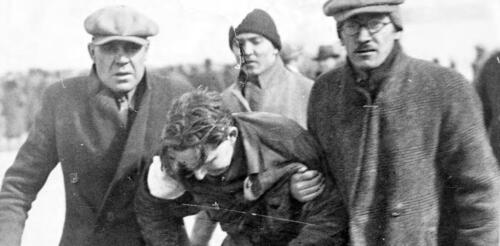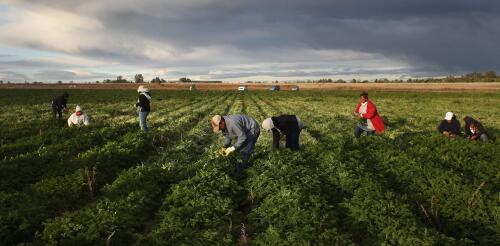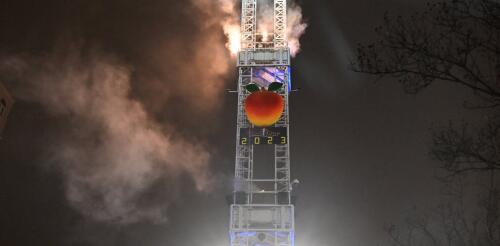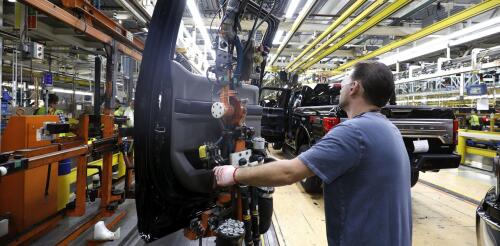Labor
The intersection of Fort Street and Oakwood Boulevard in southwest Detroit today functions mostly as a thoroughfare for trucks and commuters. However, as you sit idling at the stoplight waiting to cross the bridge over the Rouge River, you might glance to the side and see something unexpected in this heavily industrialized area: A sculpture of weathered steel reaches toward the sky alongside a spray of flowers and waves of grasses and people fishing. This inconspicuous corner, now the home of the Fort Street Bridge Park, has several stories to tell: of a river, a region, a historic conflict and an ongoing struggle. If you pull over, you’ll enter a place that attempts to pull together threads of history, environment and sustainable redevelopment. Signs explain why this sculpture and park are here: to honor the memory of protesters who met on this very spot on March 7, 1932, before marching up Miller Road to the massive Ford Rouge River Complex located in the adjacent c...
Television crime shows often are set in cities, but in its third season, ABC’s “American Crime” took a different tack. It opened on a tomato farm in North Carolina, where it showed a young woman being brutally raped in a field by her supervisor. “People die all the time on that farm. Nobody cares. Women get raped, regular,” another character tells a police interrogator. The show’s writers did their research. Studies show that 80% of Mexican and Mexican American women farmworkers in the U.S. have experienced some form of sexual harassment at work. Rape is common enough for some to nickname their workplace the “fields of panties.” For comparison, about 38% of women in the U.S. report experiencing some kind of workplace sexual harassment. In a recent report, the U.N. Food and Agriculture Organization called for transformative changes to the formal and informal social systems that disempower women who work on farms and in the food s...
The 2023 Georgia peach harvest is looking bad, although the details are sketchy. By some accounts, it’s the worst since 1955. Or maybe since 2017. There are estimates that a mild winter and late spring frost have cost Georgia growers 50% of their crop. Or perhaps 60%, or 85% to 95%. Consumers, say the growers, should expect less fruit, though what’s produced may be “fantastic and huge and sweet.” And they should expect to pay quite a bit more. As ominous as this may sound, the unpredictability of Georgia’s peach harvest has been predictable since the industry’s earliest days. So has public hand-wringing about it. It can be hard to say what a “normal” year is. In 1909, growers produced just over 826,000 bushels. In 1919, it was up to 3.5 million, then 4.4 million in 1924, then back down to 1 million in 1929. There may be plenty of peaches on Georgia license plates, but according to the University of Georgia’s 2021 Georgia Fa...
E-commerce may make shopping more convenient, but it has a dark side that most consumers never see. Say you order an electric toothbrush and two shirts for yourself during a sale on Amazon. You unpack your order and discover that the electric toothbrush won’t charge and only one shirt fits you. So, you decide to return the unwanted shirt and the electric toothbrush. Returns like this might seem simple, and often they’re free for the consumer. But managing those returns can get costly for retailers, so much so that many returned items are simply thrown out. In 2022, returns cost retailers about US$816 billion in lost sales. That’s nearly as much as the U.S. spent on public schools and almost twice the cost of returns in 2020. The return process, with transportation and packaging, also generated about 24 million metric tons of planet-warming carbon dioxide emissions in 2022. Together, costs and emissions create a sustainability problem for retailers and the p...
Ballot counting is underway in a runoff election to decide who will lead the powerful United Auto Workers union as its president. But the historic election is already transforming the union’s leadership in ways that could bring an end to decades of declining blue-collar compensation in this key sector of the economy. This was the first direct leadership election in the UAW’s 88-year history, following a series of corruption scandals that sent two former presidents to prison. With most of the other leadership races already determined, it’s clear that the union’s leadership will be closely divided between the old guard and the challengers. This transformation of how the UAW is governed sets up what is widely expected to be a more adversarial relationship between the union and the Big Three domestic car producers. Regardless of who wins the presidency, a more combative stance with automakers is likely to result in more strikes, higher car prices and also gre...




